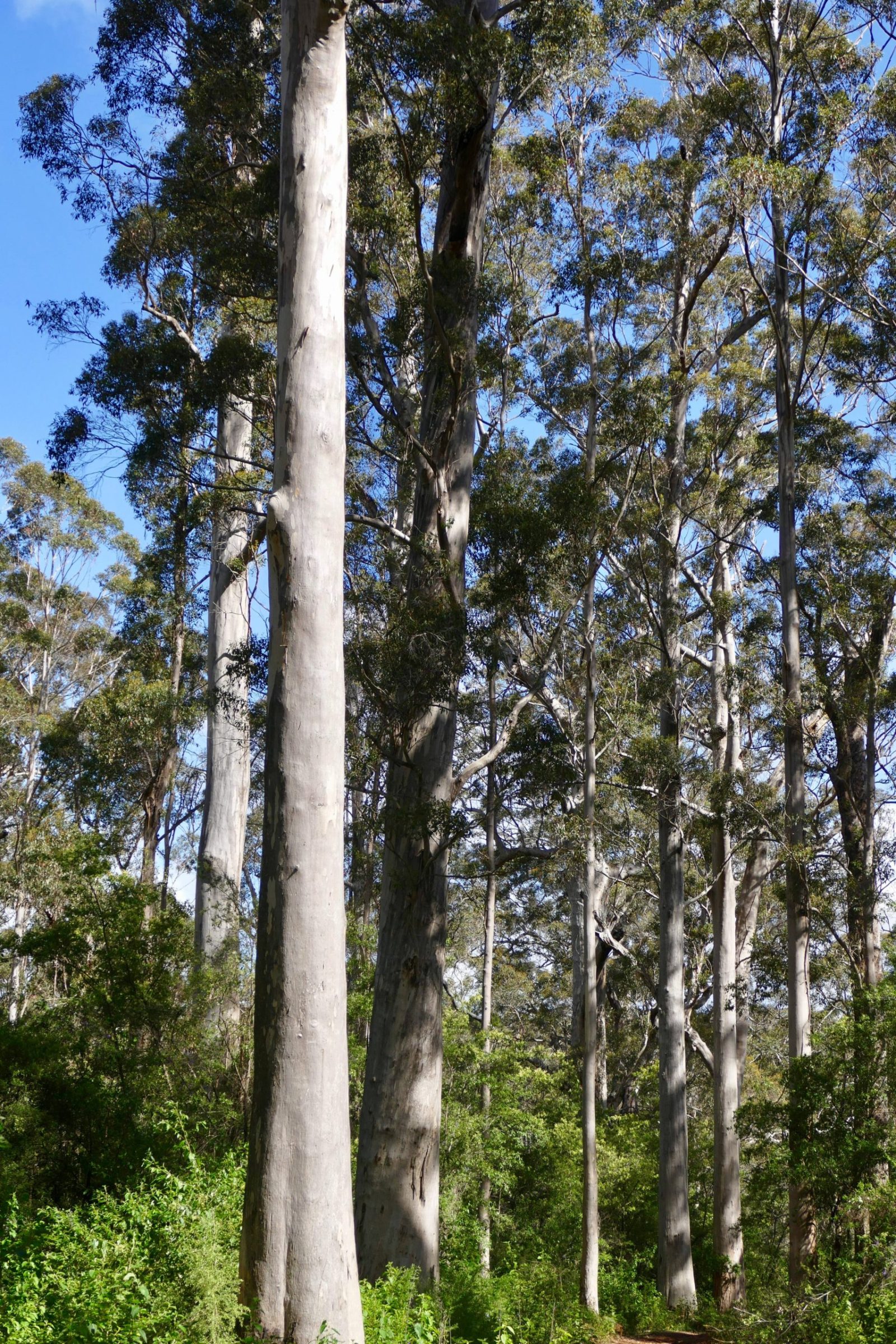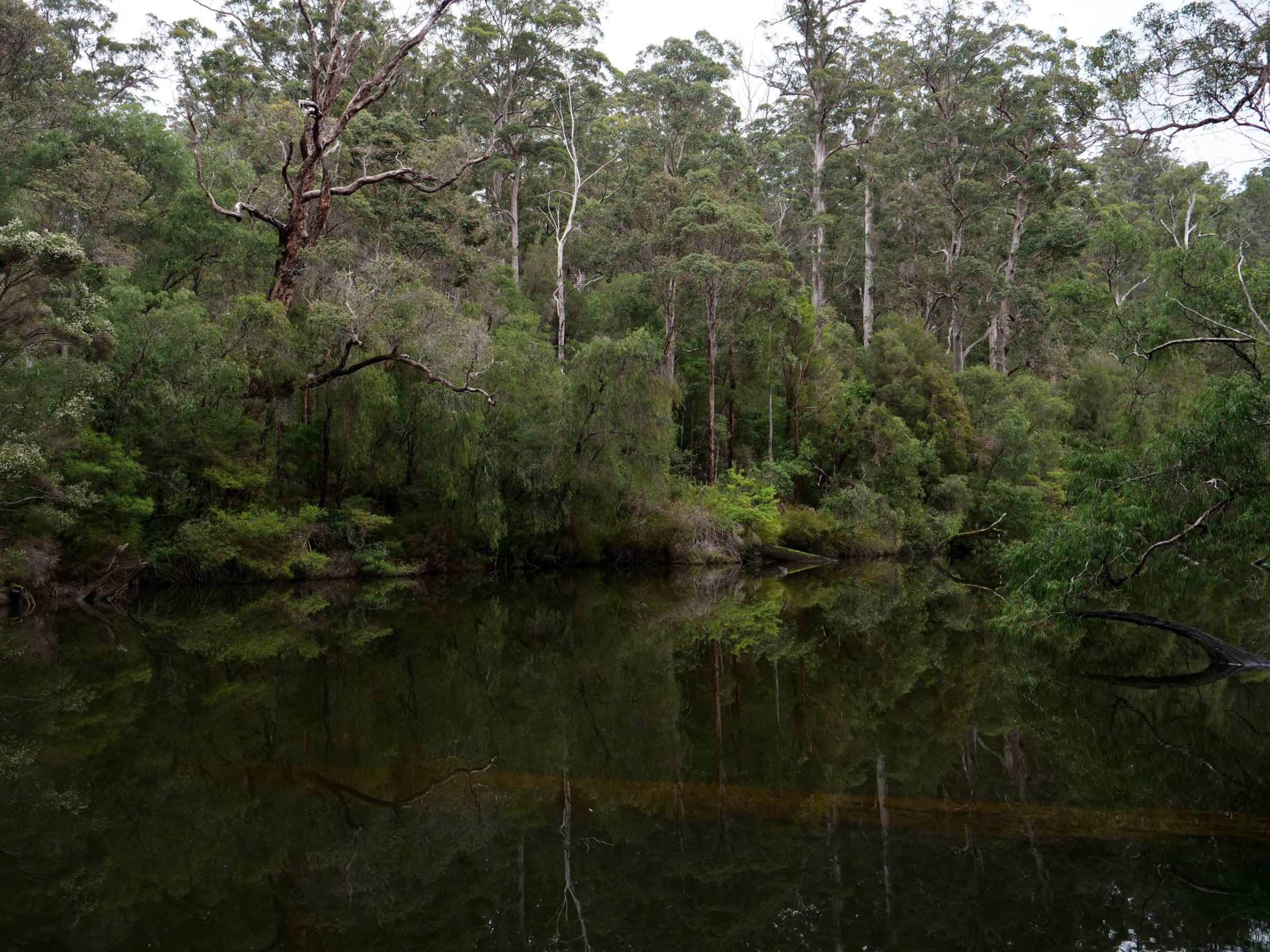This post’s featured colour photo (copyright Doug Spencer) was taken just four minutes before – and from almost the same vantage point – as the immediately preceding post’s monochrome image.
I have been lucky enough to walk in many different kinds of forest, on six continents and various islands.
All are beautiful, in many different ways, but if I had to choose a favourite, it would be so-called “virgin Karri forest”.
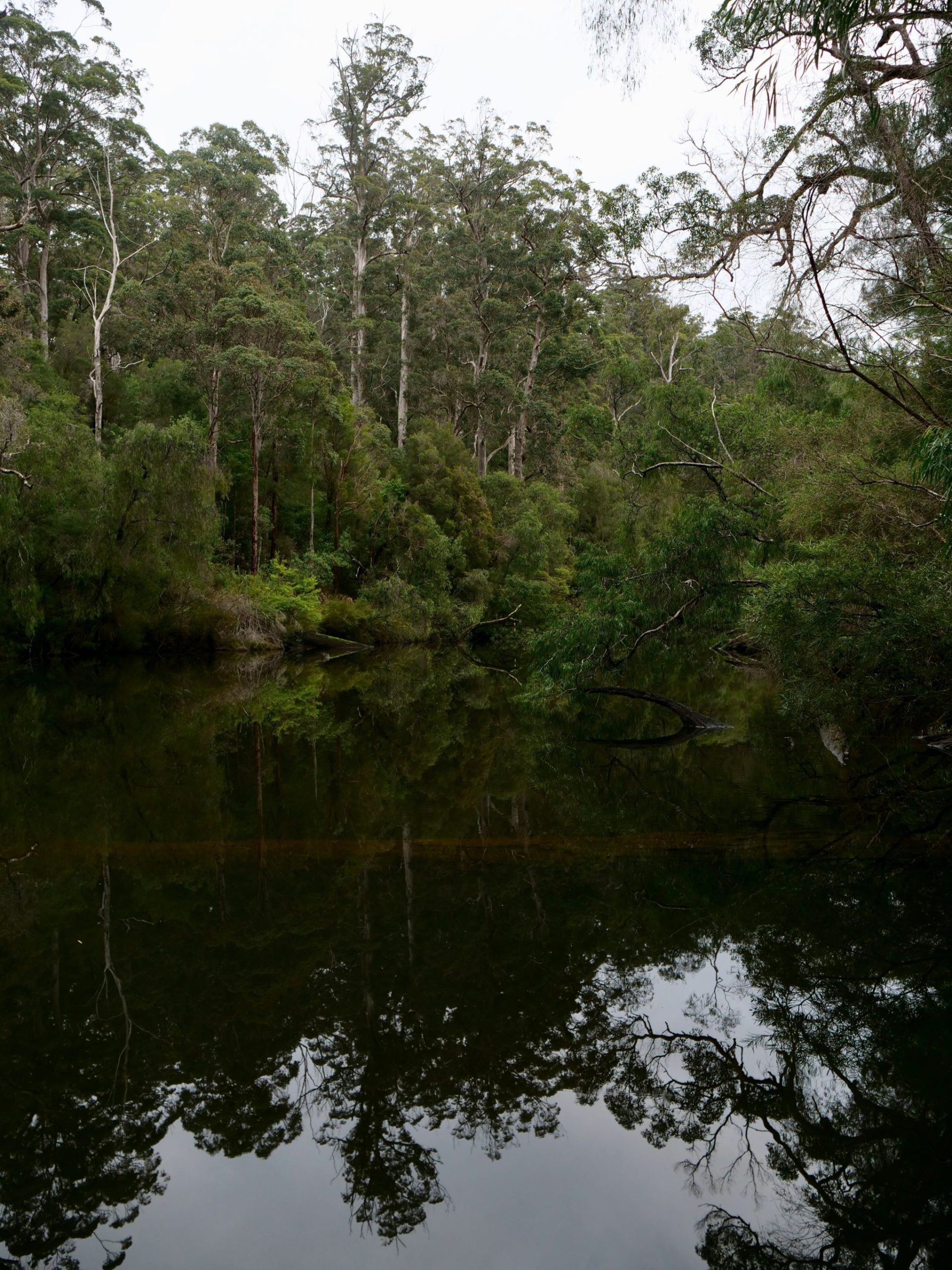
Eucalyptus diversicolor – Karri – occurs naturally only in a very small part of southwestern Western Australia.
Western Australia’s tallest species grows much taller than any European tree, and its forest is much more species-diverse than is any European forest.
One of the world’s tallest flowering plants, a mature Karri is also one of its most elegant hardwoods.
Karri honey is delicious.
Karri forest’s understory is much more lovely and diverse than is any coniferous forest’s, but Karri forest is still very “friendly” to a human on foot, or horseback.
The annual growing/shedding cycle of the Karri’s bark gives the forest a radically different appearance from winter to summer.
At least among readily accessible locations, the best place to immerse yourself in never-logged Karri forest is the Warren National Park, just a short drive away from Pemberton
All but one of this post’s photos were taken on the banks of the Warren River, last week, in the overcast late afternoon of one of the year’s shortest days.
The forest’s other trees are a key reason why Karri forest is – to my eyes, at least – rather lovelier than any coniferous forest.
Aromatically speaking too, this forest is very much richer than is any pine forest.
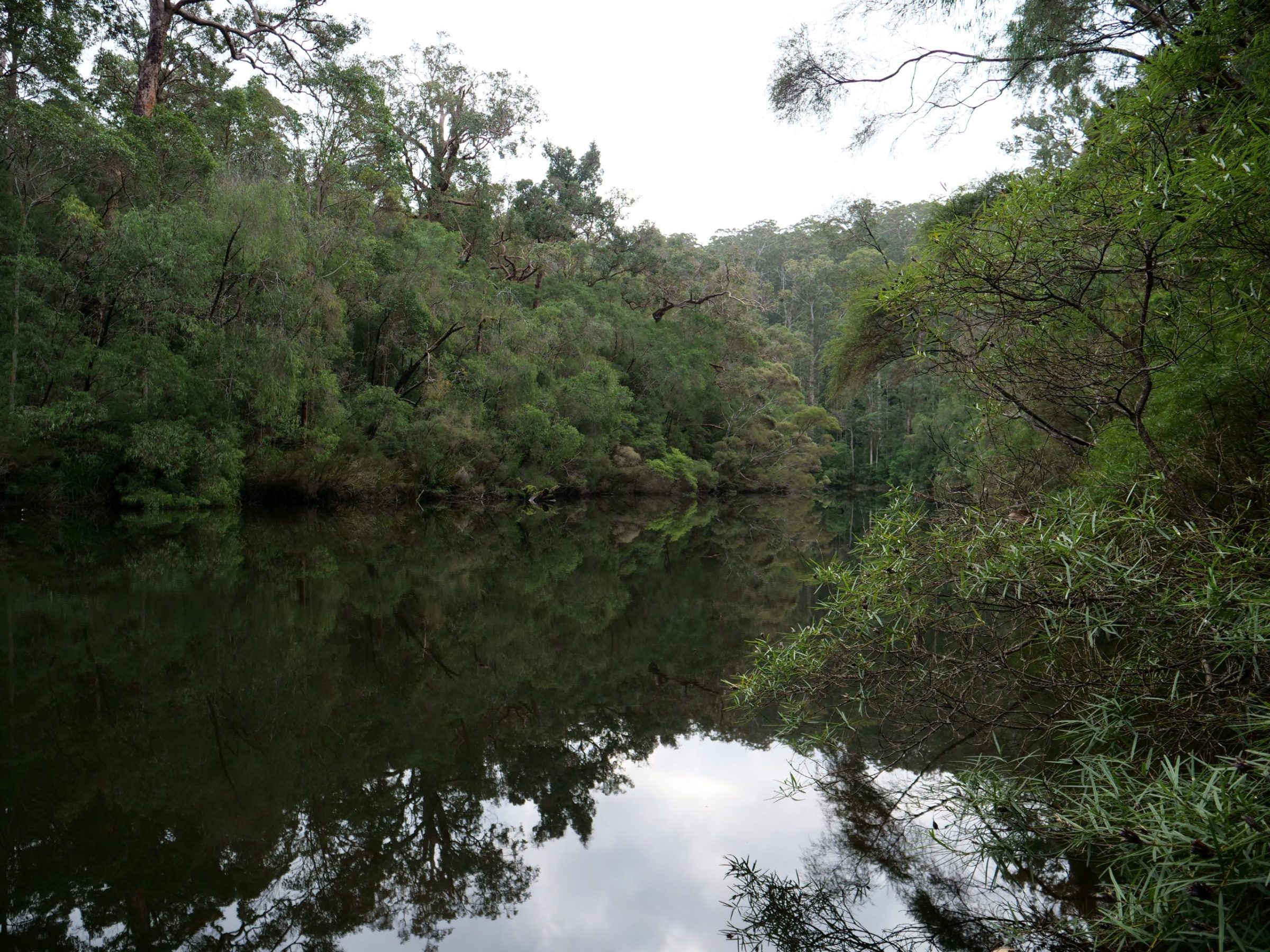
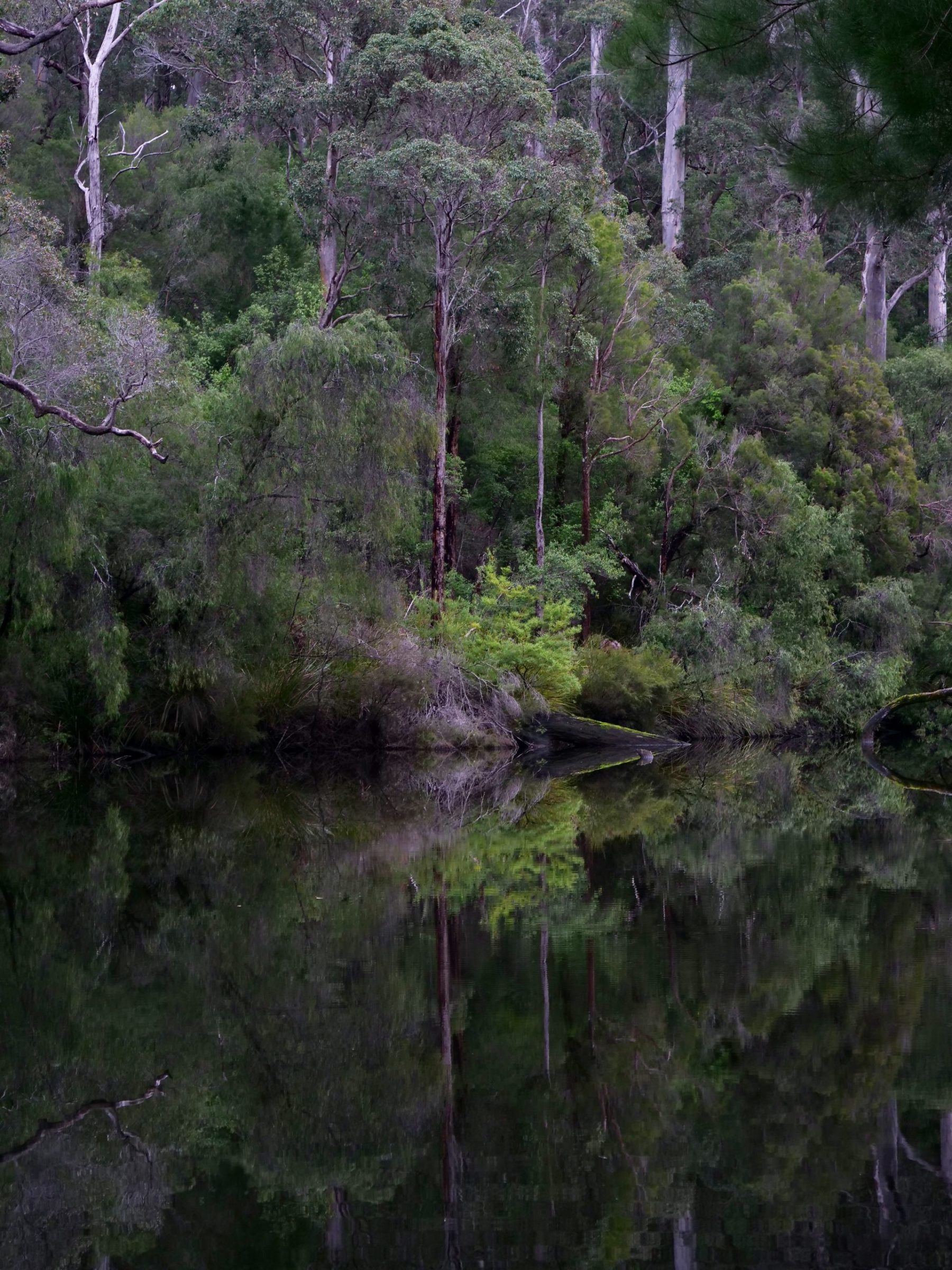
Fun fact: at 72.9 metres, Europe’s tallest reliably-measured tree is West Australian – Karri Night, planted in Portugal’s Valle de Canas around 120 years ago.
(at that age, a healthy Karri has probably reached its full height, but its girth will continue to swell over the next couple of centuries)
Karri Night has in recent years survived Portugal’s major fires.
